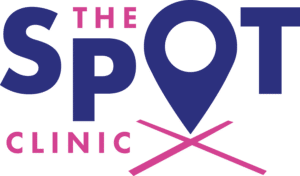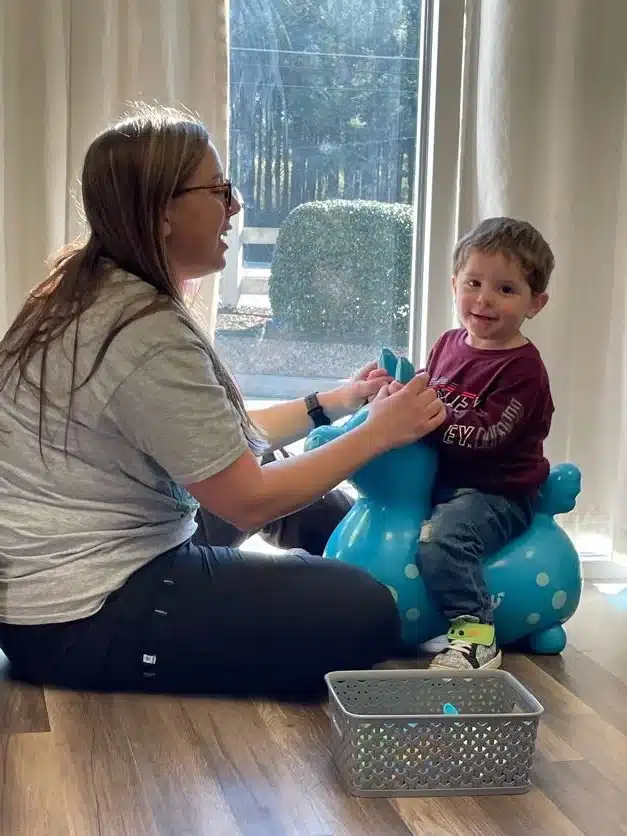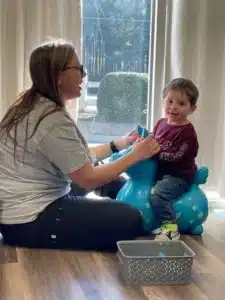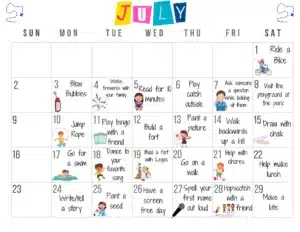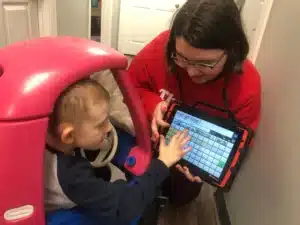There are numerous differences between the therapy a child receives in a private clinic
versus services provided in the school system. Both therapy locations are very important to a child’s development, but they address different things. Children in school-based therapy are seen from ages 3-21, while children as young as 2 months old may be seen in clinic- based therapy. It is important that parents understand the treatment goals in each environment, look for progress, and be open minded in using different settings.
Clinic-Based Therapy
In the clinic, goals and treatment plans are written to address the whole child. These goals are to incorporate all aspects of home, the community, and daily living activities. They are designed and led by therapists who work in cooperation with the physician. Sessions are typically from 30 – 60 minutes, 1 – 2 times per week and done one-on-one with the therapist.
School-Based Therapy
School-based therapy begins with an evaluation and qualification for an Individualized Education Plan (IEP). This IEP includes what school performance is being negatively impacted and what services should be put in place to overcome this decreased school performance. Sessions are typically done in groups and/or integrated into the classroom.
| Clinical Model (Private clinics) | Educational Model (Schools) | |
| Who Governs the Therapy Services | State and national practice guidelines focusing on medical/functional needs in the home and community. | Federal and state laws – The Alabama Administrative Code. Therapy is often considered a “related service” to special education. Therapy is only provided if the child needs therapy to function in school. |
| Determination for Therapy | In clinic-based therapy, the physician, family, and therapist make the decision regarding amount, frequency and duration of therapy recommended. The amount of therapy actually received may be affected by whether or not an insurance company, Medicaid program or other funding sources reimburse for the recommended services. | In public schools, therapy is determined by the IEP team. Parents are a member of the team. The team determined the amount, frequency and duration of therapy – not the physician. |
| Methodology of Therapy | A therapy typically provides individual treatment. Individualized home programs and ongoing caregiver training are necessary parts of the service to encourage carryover outside of treatment. | Therapy may be provided individually or in small groups by a therapist. Intervention may or may not be provided directly with the child. Collaborating with educational staff to modify the child’s environment and daily school activities is always a part of school therapy. |
| Location of Therapy | Clinic-based therapy is provided in clinics, hospitals, homes and community settings. | Therapy takes place where the child is enrolled in school. Appropriate intervention may be provided in classrooms, hallways, gyms, playgrounds, lunchrooms, or in a separate therapy room. |
| Therapy Services | Families have the opportunity to seek out services from a therapist with specialty training in areas such as speech, physical, occupational, or behavioral therapy. | Therapy services can be provided via direct intervention and consultation with staff for speech, physical, occupational, or behavioral therapy. |
| Dismissal of Services | Services are discontinued when functional skills are achieved, a plateau in progress is reached, participation in services is limited because of various circumstances, the child is stable with a therapy maintenance program, or discharge is requested. At discharge, indicators for potential follow-up are identified. There may still be a need for school-based therapy. | The decision to discontinue therapy is made by the IEP team. This may occur when the student no longer is eligible for special education, when other members of the IEP team can provide necessary interventions, or when the child can perform school tasks without therapeutic intervention. There may still be a need for clinic-based services. |
